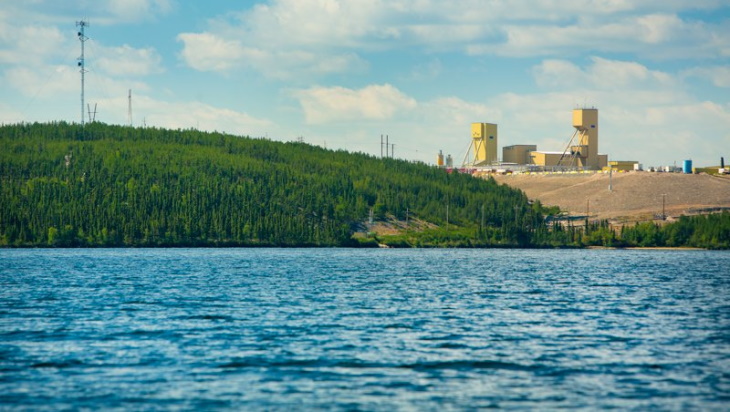Workers are returning to the Cigar Lake uranium mine in northern Saskatchewan, Canada, ahead of its planned restart later this week, Cameco has announced. All non-essential personnel were evacuated last week from the site as a precaution due to the proximity of a nearby wildfire.

Cigar Lake (Image: Cameco)
Cameco announced on 1 July that it had decided to evacuate about 230 workers from the Cigar Lake site. Around 80 personnel remained to secure the site and for essential duties. At that time, the company said: "The situation is complicated by extremely warm, dry weather, resulting from the heat dome that has settled over western Canada in recent days, along with variable wind and smoke conditions."
On 2 July, Cameco said the wildfire had moved past the main camp area without serious impact to the site itself. "While our inspections continue, we believe no structural damage has occurred to any buildings and all assets appear intact," it said.
Yesterday it announced, in consultation with provincial wildfire management officials from the Saskatchewan Public Safety Agency, it believed the risk to Cigar Lake posed by the fire had now subsided.
"With improved weather and smoke conditions, minimal likelihood of further road closures in the area, and all infrastructure at Cigar Lake remaining intact, Cameco believes the full complement of personnel can be safely remobilised and regular operations resumed," it said.
Cameco is now in the process of transporting employees and contractors back to the Cigar Lake site. Final inspections and preparation of equipment will occur over the days ahead to ready the operation for a return to production.
Cigar Lake is the world's highest grade uranium mine and has produced a total of over 93 million pounds U3O8 since it was commissioned in 2014. Ore from Cigar Lake is processed at the McClean Lake mill, 70 kilometres from the mine, which is operated by Orano. Uranium production at Cigar Lake was suspended due to restrictions created by the COVID-19 pandemic for five months from March 2020, and for a second time in December, resuming in April.
Researched and written by World Nuclear News